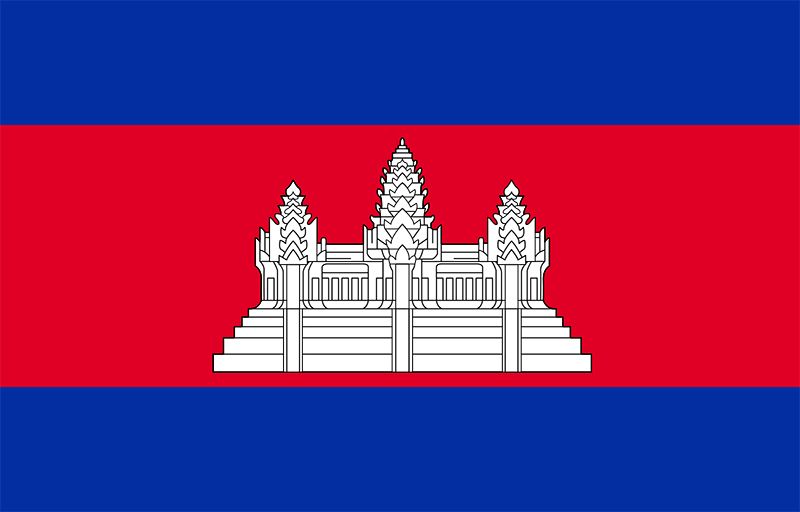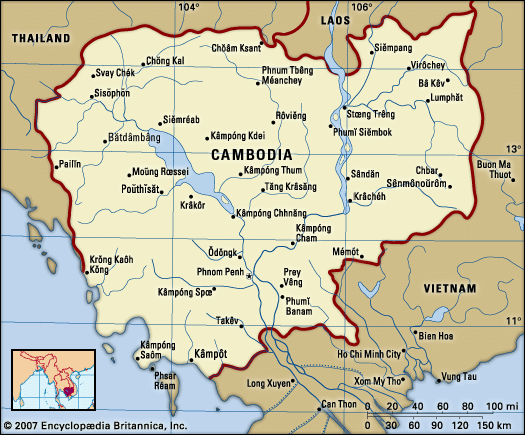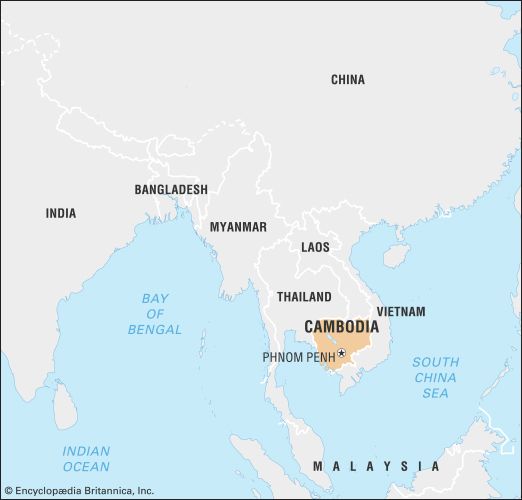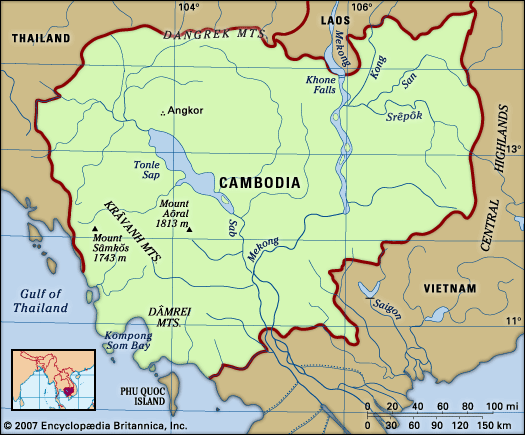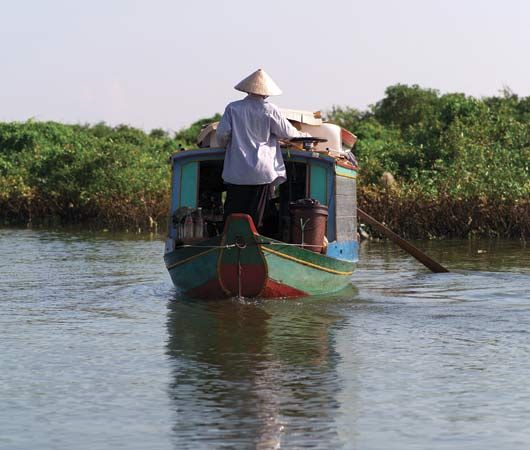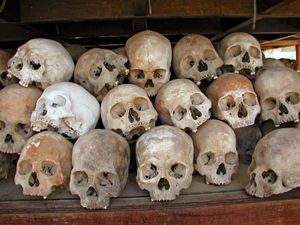Our editors will review what you’ve submitted and determine whether to revise the article.
News •
In March 1970, while Prince Sihanouk was visiting the Soviet Union, the National Assembly voted to remove him from office as head of state. Lon Nol subsequently took control of the government. Confused and hurt, Sihanouk traveled to Beijing and accepted Chinese advice to resist the coup by taking charge of a united front government-in-exile. That government was to be allied with China and North Vietnam and was to use the Cambodian communist forces led by Saloth Sar, which only a few days before had been fighting against Sihanouk’s army.
In Phnom Penh, Lon Nol’s new government was initially popular, particularly for his quixotic pledge to rid Cambodia of Vietnamese communist troops. In fact, the resulting confrontation dragged Cambodia fully into the Vietnam conflict. In May 1970 a task force of U.S. and South Vietnamese troops invaded eastern Cambodia, but communist forces had already retreated to the west. Two offensives launched by Lon Nol—named for the semimythical Cambodian kingdom of Chenla—were smashed by the Vietnamese, and thereafter his troops assumed a defensive stance. North Vietnamese support for the Cambodian communists diminished in 1973, following a cease-fire agreement reached in Paris with the Americans. The Cambodian communists, however, refused to adhere to the agreements, and in 1973 they were subjected to a massive American aerial bombardment, although the United States and Cambodia were not at war and no U.S. troops were endangered by Cambodia. The bombing slowed communist attacks on Phnom Penh and wreaked havoc in the heavily populated countryside around the capital. The civil war lasted two more years, but already by the end of 1973 the Lon Nol government controlled only Phnom Penh, the northwest, and a handful of provincial towns.
In the meantime, Sihanouk declined in importance. By the end of 1973 the Cambodian communists dominated every element of the resistance, although they still claimed Sihanouk as a figurehead. Lon Nol’s isolated regime in Phnom Penh continued to receive large infusions of American aid, increasing opportunities for corruption.
In April 1975 the Lon Nol government collapsed. Communist forces quickly entered Phnom Penh and immediately ordered its inhabitants to abandon the city and take up life in rural areas. Phnom Penh and other cities and towns throughout the country were emptied in less than a week. Thousands of city dwellers died on the forced marches, and in subsequent years conditions worsened.
Democratic Kampuchea
Over the next six months, following the directives of a still-concealed Communist Party of Kampuchea, Cambodia experienced the most rapid and radical social transformation in its history. Money, markets, and private property were abolished. Schools, hospitals, shops, offices, and monasteries were closed. Nothing was published; no one could travel without permission; and everyone was ordered to wear peasant work clothes. As in Mao Zedong’s China, the poorest peasants were favored at everyone else’s expense. A handful of party leaders controlled everything in the country, but they remained in hiding and explained few of their decisions. Instead, they urged everyone to “build and defend” the country. In April 1976 Sihanouk resigned as head of state, soon after a new constitution had renamed the country Democratic Kampuchea. A soft-spoken and unknown figure named Pol Pot became prime minister, and more than a year passed before observers outside the country were able to identify him as Saloth Sar.
In 1976–77 the new regime, following the lead of Maoist China, sought to collectivize Cambodia totally, mobilizing its population into an unpaid labor force and seeking to double the average prerevolutionary yields of rice immediately and on a national scale. The human costs of that ill-conceived experiment were enormous, and the Khmer Rouge were widely condemned by the international community once the magnitude of their crimes became known, most notably through the release in 1984 of The Killing Fields, a film adaptation of the Khmer Rouge story. Conservative estimates are that between April 1975 and early 1979, when the regime was overthrown, at least 1.5 million Cambodians—about 20 percent of the total population—died from overwork, starvation, disease, or execution. Parallels have been drawn between those events and Joseph Stalin’s collectivization of Ukrainian agriculture in the Soviet Union in the 1930s, the Nazi Holocaust of World War II, Mao’s Great Leap Forward in China in the late 1950s, and the massacres in Rwanda in the mid-1990s. The Soviet and Chinese experiments appear to have been models for the Khmer Rouge, although the proportion of the population killed in Cambodia under the Khmer Rouge was greater than it had been in China or the Soviet Union. The number of deaths stemmed from the literalism with which plans were carried out (Pol Pot’s supporters were told to “smash” the enemy), the cruelty of the inexperienced communist cadres, and—as far as executions were concerned—the suspicions of the leadership that the failure of their experiment could be traced to “traitors” in the pay of foreign powers. The Communist Party’s interrogation center in Phnom Penh, a prison code-named “S-21,” was the site of more than 15,000 such executions. Those tortured and put to death included men and women who had served the party faithfully for years—victims of the extreme paranoia of Pol Pot and his colleagues.

